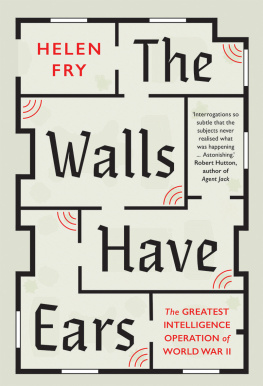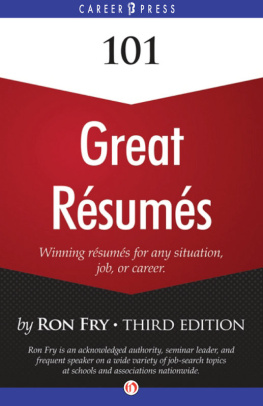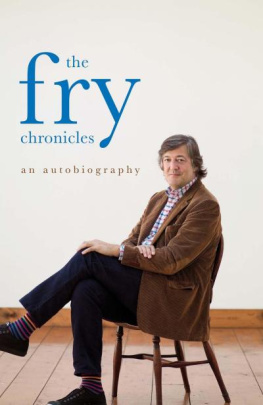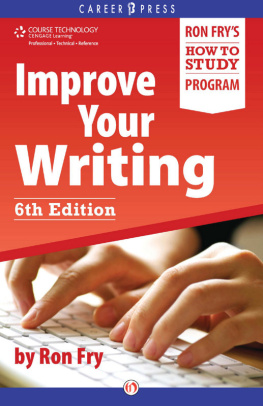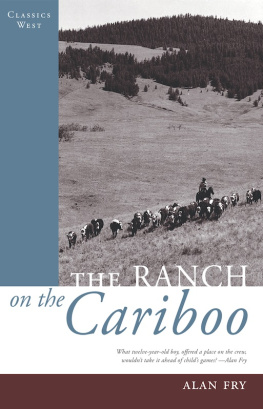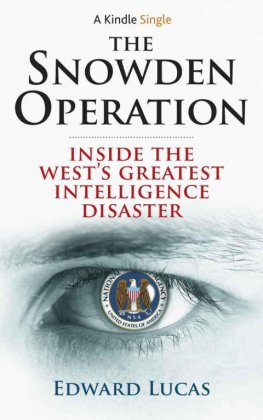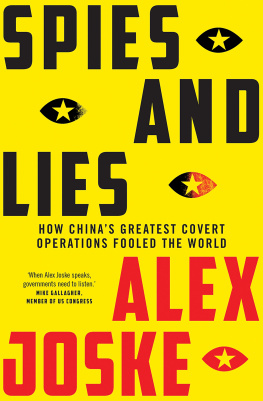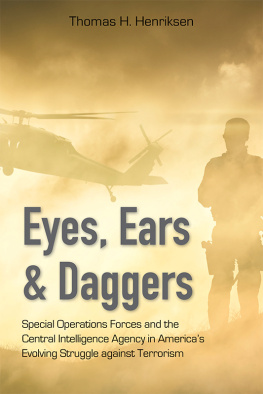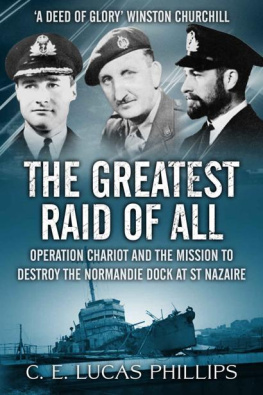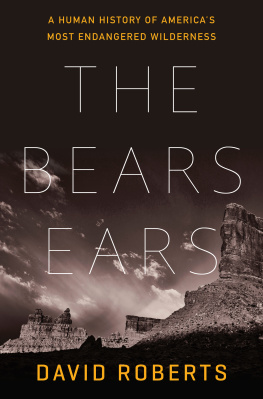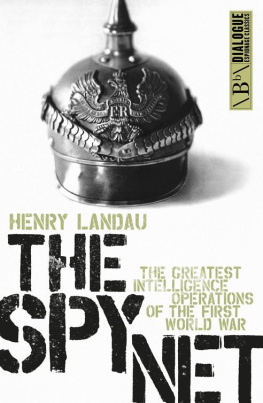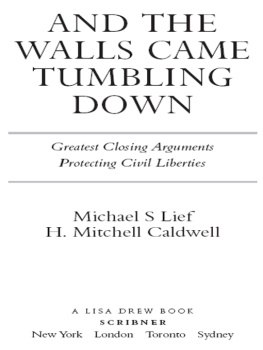Fry - The walls have ears: the greatest intelligence operation of World War II
Here you can read online Fry - The walls have ears: the greatest intelligence operation of World War II full text of the book (entire story) in english for free. Download pdf and epub, get meaning, cover and reviews about this ebook. City: Großbritannien, year: 2019, publisher: Yale University Press, genre: Detective and thriller. Description of the work, (preface) as well as reviews are available. Best literature library LitArk.com created for fans of good reading and offers a wide selection of genres:
Romance novel
Science fiction
Adventure
Detective
Science
History
Home and family
Prose
Art
Politics
Computer
Non-fiction
Religion
Business
Children
Humor
Choose a favorite category and find really read worthwhile books. Enjoy immersion in the world of imagination, feel the emotions of the characters or learn something new for yourself, make an fascinating discovery.
- Book:The walls have ears: the greatest intelligence operation of World War II
- Author:
- Publisher:Yale University Press
- Genre:
- Year:2019
- City:Großbritannien
- Rating:5 / 5
- Favourites:Add to favourites
- Your mark:
- 100
- 1
- 2
- 3
- 4
- 5
The walls have ears: the greatest intelligence operation of World War II: summary, description and annotation
We offer to read an annotation, description, summary or preface (depends on what the author of the book "The walls have ears: the greatest intelligence operation of World War II" wrote himself). If you haven't found the necessary information about the book — write in the comments, we will try to find it.
Fry: author's other books
Who wrote The walls have ears: the greatest intelligence operation of World War II? Find out the surname, the name of the author of the book and a list of all author's works by series.
The walls have ears: the greatest intelligence operation of World War II — read online for free the complete book (whole text) full work
Below is the text of the book, divided by pages. System saving the place of the last page read, allows you to conveniently read the book "The walls have ears: the greatest intelligence operation of World War II" online for free, without having to search again every time where you left off. Put a bookmark, and you can go to the page where you finished reading at any time.
Font size:
Interval:
Bookmark:
THE WALLS HAVE EARS

Copyright 2019 Helen Fry
All rights reserved. This book may not be reproduced in whole or in part, in any form (beyond that copying permitted by Sections 107 and 108 of the U.S. Copyright Law and except by reviewers for the public press) without written permission from the publishers.
For information about this and other Yale University Press publications, please contact:
U.S. Office:
Europe Office:
Set in Adobe Garamond Pro Regular by IDSUK (DataConnection) Ltd
Printed in Great Britain by TJ International Ltd, Padstow, Cornwall
Library of Congress Control Number: 2019941059
ISBN 978-0-300-23860-0
A catalogue record for this book is available from the British Library.
10 9 8 7 6 5 4 3 2 1
Dedicated to
the Secret Listeners
who fled Hitler and worked for British intelligence
and
to the memory of
Thomas Joseph Kendrick
MI6 spymaster
In wartime, truth is so precious that she should always be protected by a bodyguard of lies.
Sir Winston Churchill
Contents
Illustrations
Plates
In the text
Acknowledgements
Huge thanks to Heather McCallum, the Managing Director at Yale and commissioning editor, for publishing this book and for her enthusiasm and support. My sincere thanks to Marika Lysandrou and Rachael Lonsdale at Yale for their meticulous edits, patience and work on the manuscript that has enhanced the story, along with my copy editor Eve Leckey. I am equally grateful to my agent Andrew Lownie for his immense support throughout.
My profound thanks to two very special veteran secret listeners, Eric Mark and the late Fritz Lustig (19192018), without whom this book could not have been written. We embarked on a journey that led to the three of us appearing live on the BBCs The One Show in January 2013. I was able to interview Fritzs wife, Susan, many times before she passed away in 2013. I also interviewed secret listeners Peter Hart and Paul Douglas. My thanks to veteran former intelligence officer, Cynthia Turner (ne Crew), now residing in Australia, for her memories.
This book could not have been written without the help over several years of the grandchildren of Colonel Thomas Joseph Kendrick (Secret Intelligence Service spymaster and commanding officer): my sincere thanks to his granddaughter Barbara Lloyd and her brother, the late Ken Walsh. Much appreciation, too, to Kendricks great-granddaughters Anne Marie Thorpe and Christina Sutch. Huge thanks to Derek Nudd (grandson of Commander Burton Cope) for providing information from his own naval intelligence research and sharing his transcripts of the diary of naval interrogator Bernard Trench. Also to Anne Walton (daughter of Samuel Denys Felkin).
My gratitude to the following people for providing information and photographs: Lesley Allocca and son Michael Allocca, Dudley Lambert Bennett and son Otto Bennett, Andrew Benson, Richard Benson, David Birnbaum, Professor Hugo de Burgh, Robert Chester, Richard Deveson, Tom Deveson, Liz Driscoll, Andrea Evers, Arthur Fleiss, Dr John Francken, Adam Ganz, Barbara Horwitz, Caroline Jestin, Jennifer Jestin and Loftus Jestin, Andrew Leach, Helen Lederer, Peter Leslie, Roger Lloyd-Pack, the late Robin Lustig, Stephen Lustig, Melanie McFadyean, Stella MacKinnon, Alasdair Macleod, Anne Mark, Miriam Mark, Roger Marshall, Nigel Morgan, Ernest Newhouse, Peter Oppenheimer, Veronica Pettifer, Jessica Pulay, John Ross, Trixy Tilsiter, Sir Michael Tugendhat, Tom Tugendhat, Mimia Umney-Gray, David Wilson. My thanks to Alexia Dobinson who has typed up original reports and interviews.
A huge amount of support has been given by Mark Birdsall and Deborah McDonald of Eye Spy Intelligence Magazine my thanks to them, and also to Iain Standen (CEO of Bletchley Park), Sarah Paterson and Kay Heather at the Imperial War Museum, Mark Scoble, Nigel Parker, Dick Smith, Neil Fearn, Mark Lubienski, David King, Steve Mallinson, Peter Quinn; Phil Tomaselli for his expertise from MI5, Secret Intelligence Services and Foreign Office sources; Fred Judge and Joyce Hutton at the Military Intelligence Museum (Chicksands); Tom Drysdale, archivist at HM Tower of London; and Colonel John Starling and Norman Brown of the Royal Pioneer Corps Association.
This research has led to a special friendship with producer Rebecca Hayman, whom Fritz Lustig and I first met during the filming for the documentary, Spying on Hitlers Army (Channel 4 and PBS). Most poignantly, it was Rebecca who recorded Fritz Lustigs last public interview, with Sir David Jason in the grounds of Trent Park (Cockfosters, North London) in 2017, for the TV series David Jasons Secret Service.
Having written the wartime history of MI9/MI19s bugging operation and the biography of Thomas Kendrick (Spymaster), I became involved in the campaign in 2015 to save Trent Park as a museum to the secret listeners, and subsequently as deputy chair and a trustee of the Trent Park Museum Trust. The trust is indebted to Mr Tony Pidgley (Chairman of Berkeley Homes) and his Board who have generously given over the ground floor and basement of the mansion for this purpose.
Thanks to my dedicated family for their loyal and practical support over the years. A special commendation goes to my eldest son who accompanied me on several trips to the National Archives in 2010. He worked methodically and carefully through the transcripts of conversations from Trent Park, Latimer House and Wilton Park.
I have been incredibly privileged and honoured to have worked on this story for two documentaries with Sir David Jason OBE, for ITVs Britains Secret Homes (filmed at Latimer House in Buckinghamshire), and Channel 4s David Jasons Secret Service (October Films, 2017). Sir David is inspirational, enjoys a good discussion on spies, and has huge respect for the men and women who worked at the M Room sites. His particular hero is the wartime spymaster himself: Thomas Joseph Kendrick. The favourite drink of Kendricks colleagues especially the Naval Intelligence team was the exotic cocktail pink gin. So, may we raise a glass of pink gin to the nations hitherto unsung hero, Thomas Kendrick, as we picture him on the terrace of one of his secret sites with Ian Flemings own spies of the Naval Intelligence...
Abbreviations
ADI(K) | Air Intelligence (internal section) |
ATS | Auxiliary Territorial Service |
CIA | Central Intelligence Agency |
CSDIC | Combined Services Detailed Interrogation Centre |
DDMI | Deputy Director of Military Intelligence |
DMI | Director of Military Intelligence |
ETOUSA | European Theater of Operations, United States Army |
FANY | First Aid Nursing Yeomanry |
FBI | Federal Bureau of Investigation |
FIU | Forward Interrogation Unit |
GR | General Report |
GRGG | General Report, German Generals |
GRX | General Report, POWs of different services |
HUMINT | Human Intelligence |
JIC | Joint Intelligence Committee |
NCO | Non-Commissioned Officer |
NID | Naval Intelligence Division |
OKW | Oberkommando der Wehrmacht |
Font size:
Interval:
Bookmark:
Similar books «The walls have ears: the greatest intelligence operation of World War II»
Look at similar books to The walls have ears: the greatest intelligence operation of World War II. We have selected literature similar in name and meaning in the hope of providing readers with more options to find new, interesting, not yet read works.
Discussion, reviews of the book The walls have ears: the greatest intelligence operation of World War II and just readers' own opinions. Leave your comments, write what you think about the work, its meaning or the main characters. Specify what exactly you liked and what you didn't like, and why you think so.

